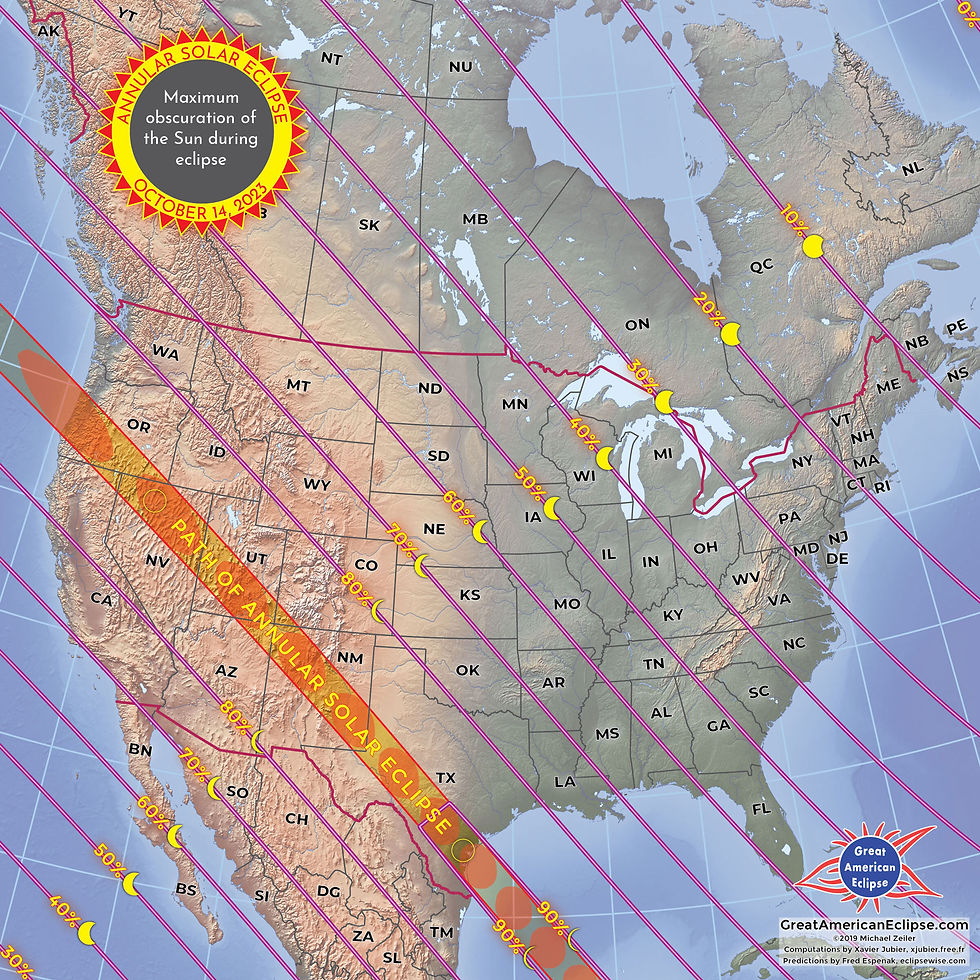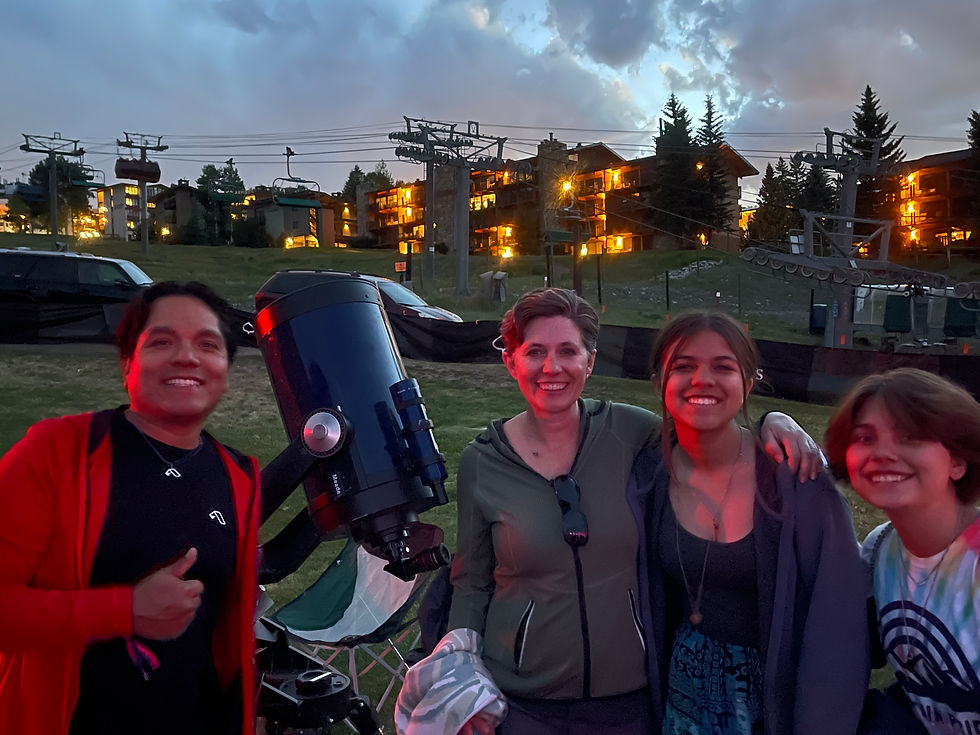The Celestial Show of October 2023: Annular Solar Eclipse
- Luke

- Sep 27, 2023
- 2 min read
If you're a sky-watcher or an astronomy enthusiast, October 14, 2023, is a date you should mark in your calendar. On that day, nature is going to put on a celestial spectacle - an annular solar eclipse. This stunning event, often referred to as the "Ring of Fire" eclipse, is the second of three notable solar eclipses that can be viewed from the USA, and it's definitely not one to miss.

What's an Annular Solar Eclipse? An annular eclipse happens when the Moon passes between the Earth and the Sun, but it doesn't completely cover the Sun's disk. Instead, it leaves a brilliant ring of sunlight, creating a surreal "ring of fire" effect. This eclipse will be visible along a narrow path that stretches across the western United States, Mexico, Central and South America.
Where and When to Witness the Magic: The eclipse begins in Oregon at 9:13 a.m. PDT and ends in Texas at 12:03 p.m. CDT. The path then continues through Mexico, Belize, Guatemala, Honduras, Nicaragua, Costa Rica, Panama, Colombia, and Brazil. For our friends along the I-70 corridor, the eclipse offers a celestial treat.

Map from NASA: https://solarsystem.nasa.gov/eclipses/2023/oct-14-annular/where-when/
Best Viewing Spots in the USA:
Oregon: The eclipse touches down in Oregon, providing a great opportunity for early viewers.
California: Alturas and Crater Lake will witness this stunning event.
Nevada, Idaho, and Utah: Northern Nevada and Utah offer excellent viewing spots, with easy access from major highways.
Colorado: The southwestern corner of Colorado offers picturesque landscapes and a chance to capture the eclipse's beauty.
New Mexico: Albuquerque and Roswell are in the path of the annularity, providing great viewing opportunities.
Texas: San Antonio and Corpus Christi will be treated to impressive durations of annularity.
Safety First: Remember, never look at the Sun during an eclipse without proper eye protection. Approved solar filters are a must to safeguard your eyes.
A Warm-Up for the Total Solar Eclipse: This annular eclipse is just a prelude to an even more spectacular event. In less than six months, on April 8, 2024, a total solar eclipse will grace the skies over the United States. So, if you have the chance to see this annular eclipse, don't miss it. It's a warm-up act for the grand celestial performance coming in April.
October 14, 2023, promises a celestial display that will leave spectators in awe. Whether you're an experienced stargazer or just someone who appreciates the beauty of the cosmos, this annular solar eclipse is an event you'll want to experience. So, prepare your eclipse glasses, find your spot along the I-70 corridor, and get ready to witness the magic of the "Ring of Fire" in the sky.

For more information and to stay updated on this celestial event, visit AstroTours.org.

.png)


Comments